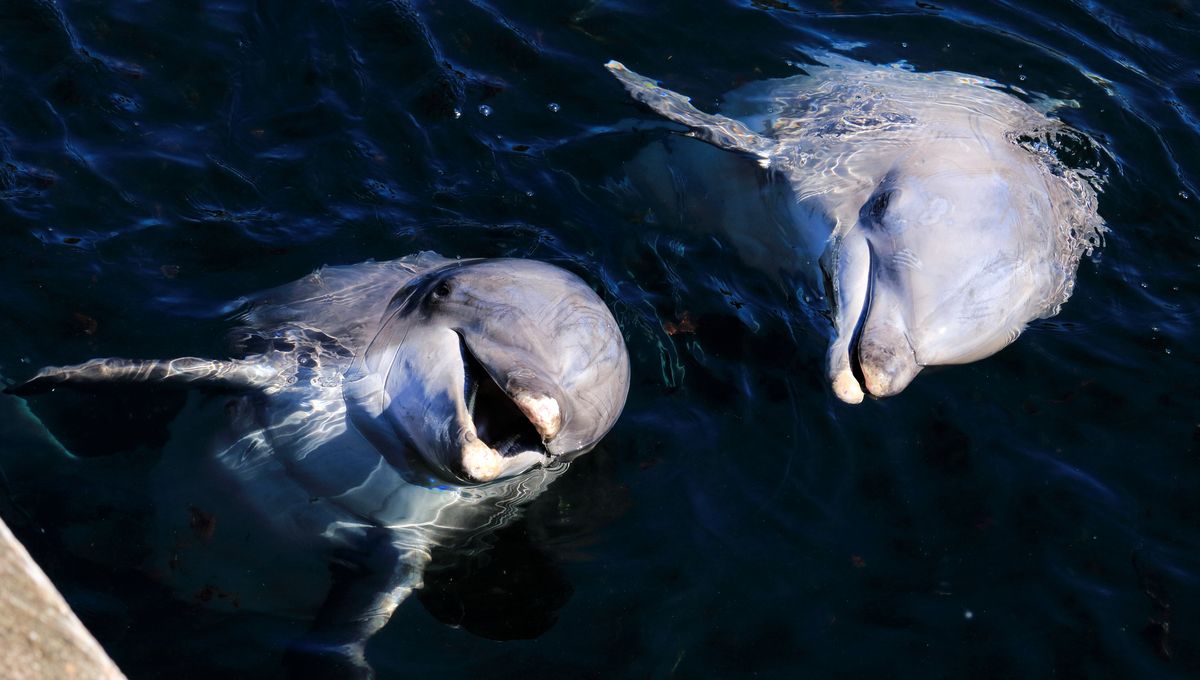
Any mother or caregiver will recognize the distinct way we speak to babies – “motherese”, as the baby talk that uses soothing, high-pitched tones to communicate with infants and small children is known across the world. Now, new research has found that humans are not the only species to practice it.
According to a new study led by researchers from Woods Hole Oceanographic Institution, bottlenose dolphins may also display this behavior when communicating with their young. This represents one of the first times motherese has been observed in nonhuman species, and suggests the behavior could enhance bonding and maybe even learning in young animals.
These findings may well open whole new lines of inquiry for the study of animal communication and could indicate new perspectives on the evolution of vocal learning.
Each dolphin has a “signature whistle”, which may well function as name-like concepts that allow these marine mammals to distinguish between and to recognize individuals – just as our names help us. Dolphins use these signatures to initiate and maintain contact with one another and to communicate urgency. This behavior is acquired at some point in the animal’s first year of life, but it is not clear how they do so.
Equally, young dolphins learn the “names” of their mothers and other members of their pod, so that they can get their attention and call for help.
“They use these whistles to keep track of each other. They’re periodically saying, ‘I’m here, I’m here’,” study co-author Laela Sayigh told the Guardian.
These signature whistles are ideal for study as they can be directly compared with speech intonation patterns. Moreover, because dolphins produce these whistles in different contexts, researchers can quantify subtle changes in their vocalizations when a mother is in the presence of her calves and when she is not.
Sayigh and colleagues examined the signature whistles of 19 mother dolphins in Florida, whose whistles were recorded over a 30-year period. In some years, these mothers would have calves and, in others, they would not. Generally speaking, dolphin calves stay with their mothers for about 3 years before going their separate ways.
“We compared signature whistle parameters of the same adult female bottlenose dolphins recorded both with and without their dependent calves during brief catch-and-release events,” the authors wrote.
The team found that the mothers changed their whistle pitch when directing it at their calves. The whistle’s pitch and range became higher than usual and they also emitted slightly lower minimum frequencies when alone with their offspring. These changes in pitch and frequency patterns are similar to patterns seen in humans when talking to infants.
Previous studies have shown that some animal species do adopt tonal differences when communicating with their offspring, but to date none of these examples have been comparable to the behavior in humans.
“Given that dolphins have a flexible communication system enabled by vocal production learning, features shared with the vocal production system of humans,” the team writes, “it seems likely that motherese may convergently function to enhance attention, bonding, and vocal learning in bottlenose dolphin calves, as it does in humans.
“Our data add to the growing body of evidence that dolphins provide a powerful animal model for studying the evolution of vocal learning and language.”
The study is published in PNAS.
Source Link: Dolphin Moms Use “Baby Talk” To Communicate With Their Calves